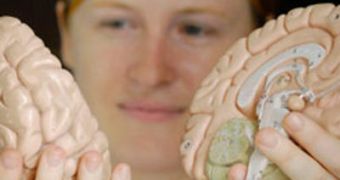Researchers at the Queensland University of Technology (QUT) say that they discovered a way to use basic mathematical concepts in understanding, and potentially fighting, Parkinson's disease. By using mathematics, doctors may be able to treat their patients better.
The QUT group says that their approach allows healthcare providers to tailor treatments specifically for each patient, thus bringing the goal of personal medicine a little closer to reality. The overall quality of life could also improve significantly for these people.
In the new study, led by QUT Faculty of Science and Technology PhD student Nicole White, experts analyzed Parkinson's symptoms from 350 diagnosed patients. The symptoms were them grouped into categories, including tremors, rigidity, speech impairment and so on.
“Because there's huge variation in the types of symptoms patients have we found clusters or subgroups of symptoms in patients,” White explains, saying that her team managed to get electrical recordings of people's brains while the patients were undergoing deep brain stimulation.
DBS is a technique used to treat people with epilepsy, advanced stages of Parkinson's, and so on. The procedure requires the introduction of electrodes deep within the brain, and stimulating certain areas.
“This research will eventually allow us to monitor improvements before and after surgery and be linked with symptoms data to determine which treatment the patient will respond best to,” White explains.
“We recorded the changes in neural activity during surgery. What we found was the mathematical models we used matched up with what the neurologist saw. Our research should give certainty about where to put the electrodes during surgery to ensure the treatment is as effective as it could be,” she says.
The work was focused on a region of the brain called the subthalamic nucleus. The brain uses this area to control some aspects of movement, that go wrong when people develop Parkinson's. White was working with surgeons to help them locate the exact point where to insert their electrodes.
“Nicole's work is fundamental to classifying the various types of patients with Parkinson's disease, thereby providing a much needed basis to assess treatment responses across the various groups. Previously we just lumped them all together and we now know this was wrong,” says Peter Silburn.
He is a world-renowned neurologist, and also a professor of Clinical Neuroscience at the University of Queensland. He and White worked together for the new study.

 14 DAY TRIAL //
14 DAY TRIAL //